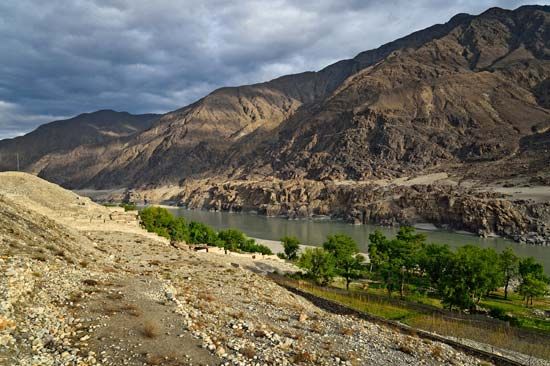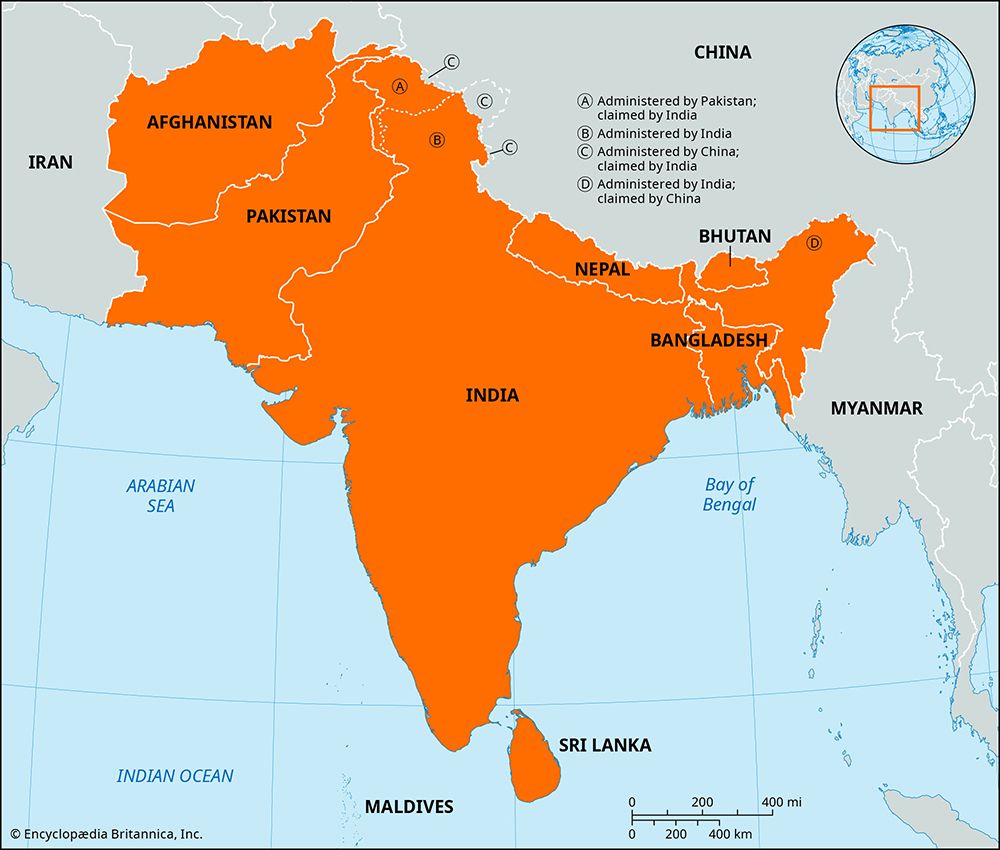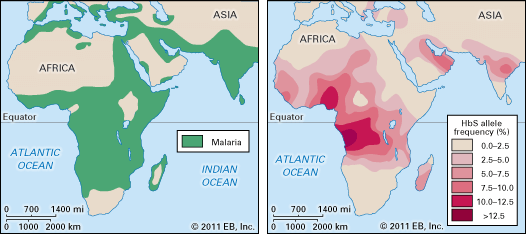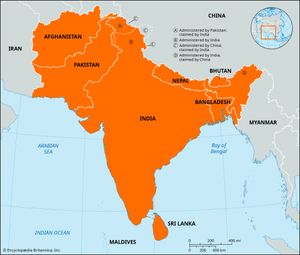South Asia
News •
South Asia, subregion of Asia, consisting of the Indo-Gangetic Plain and peninsular India. It includes the countries of Bangladesh, Bhutan, India, Pakistan, Nepal, and Sri Lanka; Afghanistan and the Maldives are often considered part of South Asia as well. The term is often used synonymously with “Indian subcontinent,” though the latter term is sometimes used more restrictively to refer to Bangladesh, India, and Pakistan.
The region is bounded to the north by a series of mountain ranges: the Hindu Kush to the northwest, the Karakoram Range in the central north, and the Himalayas to the northeast. South of the mountains is the Indo-Gangetic Plain, formed from the combined alluvial plains of the Indus, Ganges (Ganga), and Brahmaputra rivers, which lie in a deep marginal depression running north of and parallel to the main range of the Himalayas. It is an area of subsidence into which thick accumulations of earlier marine sediments and later continental deposits have washed down from the rising mountains. The sediments provide fertile soil in the Ganges and Brahmaputra basins and in irrigated parts of the Indus basin, while the margins of the Indus basin have become sandy deserts. Peninsular India and Sri Lanka are formed of platform plateaus and tablelands, including the vast Deccan plateau, uplifted in the Mesozoic and Cenozoic eras. The region includes tablelands with uplifted margins, such as the Western and Eastern Ghats, and terraced and dissected plateaus with lava mantles or intrusions.
South Asia is home to one of the world’s earliest known civilizations, the Indus civilization, and today is one of the most densely populated regions on the planet. Despite a history of ethnic, linguistic, and political fragmentation, the people of the subregion are unified by a common cultural and ethical outlook; a wealth of ancient textual literature in Sanskrit, Prākrit, and regional languages is a major unifying factor. Music and dance, ritual customs, modes of worship, and literary ideals are similar throughout South Asia, even though the region has been divided into kaleidoscopic political patterns through the centuries.

















